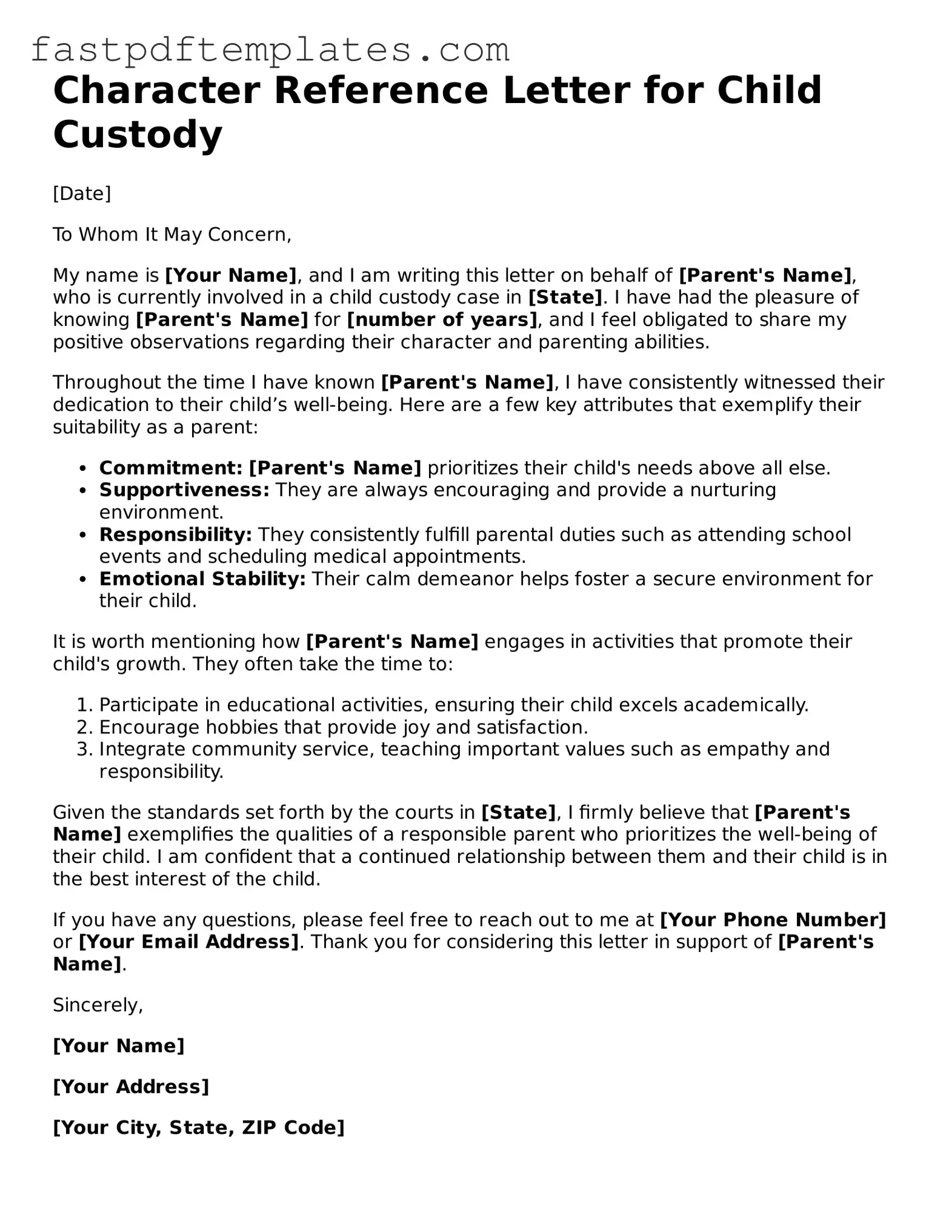A Character Reference Letter for Child Custody is similar to a Personal Reference Letter. Both documents aim to provide insight into a person's character and suitability for a particular role or responsibility. In the context of custody, the letter focuses on the individual's parenting abilities, while a personal reference letter might highlight general traits like reliability, honesty, and supportiveness. Each serves to bolster the credibility of the person being referenced, helping others understand their strengths and values.
Another document that bears resemblance is the Employment Reference Letter. This type of letter is often written by an employer to vouch for an employee's work ethic and skills. Just as the character reference letter emphasizes personal qualities relevant to parenting, the employment reference letter highlights professional attributes. Both documents help to paint a fuller picture of a person's capabilities and character, whether in family court or the workplace.
A Letter of Recommendation is also quite similar. Often used in academic or professional settings, this letter endorses an individual's skills and character. In custody cases, a character reference letter serves a similar purpose by recommending the parent’s ability to provide a stable and loving environment. Both letters are persuasive, aiming to convince the reader of the subject's positive qualities and their readiness for the responsibilities they face.
Family Law Affidavit is another document that shares similarities. An affidavit is a sworn statement that outlines facts relevant to a legal matter, including custody. While a character reference letter is more subjective and personal, both documents aim to provide evidence that supports a party's position in a custody dispute. They both contribute to the overall narrative of a parent’s capability and dedication to their child’s welfare.
Then there’s the Support Letter for Child Custody. This document is typically written by friends or family members who can attest to a parent’s involvement in their child’s life. Like a character reference letter, it highlights positive attributes and experiences that speak to a parent’s commitment and love. Both documents are intended to reassure the court of the parent’s fitness and dedication.
Next, we have the Parenting Plan. While this is a more structured document outlining how parents will share responsibilities, it often includes character references or testimonials that support each parent's case. Both the parenting plan and the character reference letter aim to demonstrate a commitment to the child’s best interests, albeit in different formats.
A Child Welfare Report can also be compared to a character reference letter. This report is usually prepared by social workers or child welfare professionals and assesses a child's living situation and the parents' capabilities. While the character reference letter is more personal and subjective, both documents aim to provide a comprehensive view of the child's environment and the parents' roles within it.
The Custody Evaluation Report is another closely related document. Conducted by a mental health professional, this report evaluates the family dynamics and the best interests of the child. Similar to a character reference letter, it considers the parents’ strengths and weaknesses. Both documents aim to inform the court about what arrangement would best serve the child’s needs.
Lastly, a Testimonial Letter from a Teacher or Coach can also be likened to a character reference letter. These letters provide insights into a child’s development and the parent’s involvement in their education or extracurricular activities. Both types of letters serve to reinforce a parent’s positive attributes, showcasing their commitment to nurturing their child's growth and well-being.
